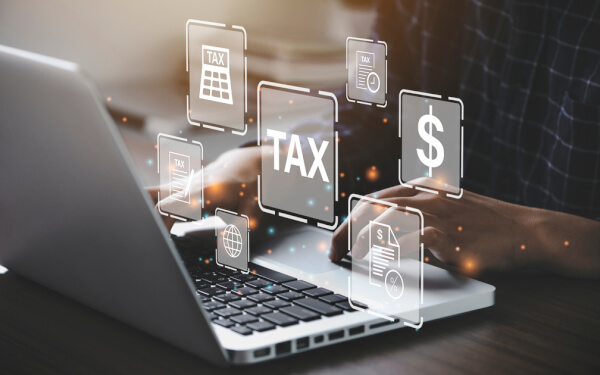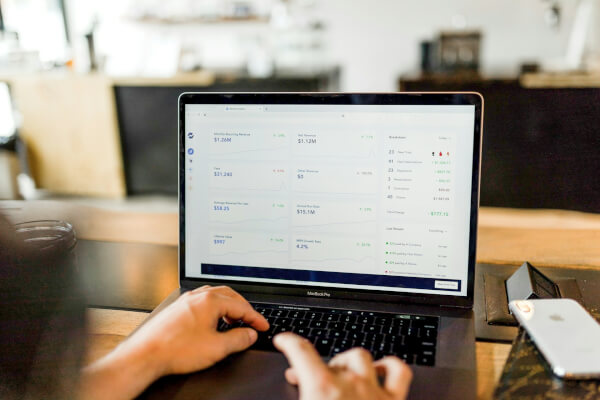GST Exemption List Singapore: Complete Business Guide for 2025
Complete guide to Singapore's GST exemption list. Learn which supplies are exempt, out-of-scope, or zero-rated and how it affects business compliance.

Burn rate tells you how long your cash reserves will last. It is a key metric that allows business owners to assess their business's financial health. If you’re looking to raise funds, having a healthy burn rate helps boost investor confidence, allowing your business to secure venture capital and investments with ease.
In this article, we’ll explain what Burn Rate is and how Singapore business owners can calculate the burn rate to better manage the financial health of their business. We will also share actionable solutions that will help you improve your burn rate.
One of the easiest solutions to improve burn rate is to reduce business expenses. We’ll share how Wise Business can help businesses cut down on significant hidden costs like transaction fees and exchange rate markups on international payments. Wise business owners can save on these unnecessary costs and divert them into better use, such as supporting business development and growth.
| Table of contents |
|---|
Burn rate is the rate at which a business is spending its cash reserves. It is usually measured on a monthly basis.¹
Businesses with a high burn rate could risk running out of money. This is particularly important for startups or unprofitable businesses to keep an eye on, to ensure that the business can survive until it starts turning a profit. If you’re running a startup that is relying on venture capital, knowing your burn rate and runway will give you an idea of when you need to start raising additional funding.
On the other hand, businesses with a low burn rate may be under-investing in their future.
Such companies may end up losing their edge in the market or falling behind their competitors. Again, if you’re looking to raise funds, you should note that having a low burn rate could dissuade aggressive investors from funding your startup.
Burn rate is generally represented in two ways that give us insights into different aspects of how a business uses its cash reserves.
Gross burn rate measures the total cash that a business spends every month.
It takes all operating expenses such as payroll, rent, insurance, utilities, marketing costs, etc, into account.
Net burn rate measures the amount of cash your business loses per month.
It is calculated by subtracting revenue and any other cash inflows from Gross Burn Rate.
Gross burn rate gives you a bird’s eye view of your business’s costs, while Net burn rate tells you how much cash your business is losing every month.
You should use Gross burn rate when you’re trying to evaluate fixed costs, but use Net burn rate to understand your business solvency or how long current cash reserves can sustain the business.
Burn rate is usually measured in terms of months; hence, to get a clearer idea of your business’s burn rate, you should use a fixed period of 6 months or annually. Using a shorter period could result in higher fluctuations that may not allow you to make effective decisions.
Gross Burn Rate = Total Cash Outflow / Number of Months²
For example, the fictional Sage Tech Ptd Ltd wants to calculate its gross burn rate over the past 6 months and has recorded total cash outflow (or operating expenses) of 730,283 SGD in the same period.
Their gross burn rate would be:
730,283 SGD / 6 = 121,713.83 SGD
This figure simply means that Sage Tech Ptd Ltd requires 121,713.83 SGD per month to sustain their business on average.
Net Burn Rate = (Monthly Revenue - Cost of Goods Sold) - Gross Burn Rate²
Using the same example, where the fictional Sage Tech Ptd Ltd has a monthly revenue of 98,190 SGD and their cost of goods sold amounts to 30,119 SGD.
Their net burn rate would be:
(98,190 SGD - 30,119 SGD) - 121,713.83 SGD = - 53,642 SGD
After taking Sage Tech’s revenue into account, their Net Burn Rate is 53,542 SGD per month, whereas their Gross Burn Rate is 121,713.83 SGD per month.
Unfortunately, there is no one-size-fits-all figure. A good burn rate for your startup or business depends on factors such as your company’s stage, industry, market conditions and growth objectives.
For example, venture capitalist and co-founder of Union Square Ventures, Fred Wilson, shared the following burn rates for software startups based in the US⁴:
However, a general rule of thumb is to have sufficient cash reserves to tide your business through three to six months of operations⁵.
If you’re a startup looking to raise capital, you should plan your next fundraising campaign accordingly.
Now that you understand about burn rate, it is clear that burn rate is affected by two key factors:
Here are some actionable strategies that will help you improve your Singapore business’s burn rate.
Optimise Payrolls: While hiring the right talent drives growth, you can opt to delay non-critical hires or consider part-time and contract talent for short-term needs.
Eliminate hidden and unnecessary expenses: Audit your workflows regularly and if you find you have software subscriptions, cloud services and other recurring expenses that may not be mission-critical, it might be wise to evaluate eliminating or renegotiating the payment plans for them.
| 💡 Foreign transaction fees and conversion fees are common expenses that tend to be charged alongside recurring expenses, especially if your business relies on cloud services that bill in USD or other foreign currencies. Using a multi-currency account business card like Wise Business Card allows you to always enjoy the mid-market exchange rate. Plus, Wise charges transparent, minimal conversion fees, and zero foreign transaction fees, so you always know how much you are paying. |
|---|
➡️ Learn more about Wise Business Card
Optimise for Revenue-generating activities: Another way to improve net burn rate is to increase your business’s revenue. After all, there’s only so much expense you can reduce.
Focus resources on projects that can bring in revenue and allocate spending to essential software that enables your team to grow the business.
Now that you know how to calculate your burn rate, you might be asking how to use it to gauge your business’s survivability.
Here’s where the concept of Cash Runway comes into play.
Here’s how you calculate your business’s cash runway:
Cash Runway = Cash Reserve / Net Burn Rate³
In Sage Tech’s case, with cash reserves of 1,000,000 SGD, their cash runway would be:
1,000,000 SGD / 53,542 SGD = 18.7 months
This means, assuming no changes to their revenue and expenses, they would run out of cash to continue running the business in about 18 months
Cash Runway tells you how long your company has before its cash reserves run out.
The longer your cash runway, the more resilient your business will be against market downturns, delayed revenues and unforeseen circumstances in your industry.
It also serves as an indicator of survivability and confidence for potential investors -startups with short runways are usually seen as riskier.
Your ideal cash runway depends on several factors such as your business model, the stage of your startup, your capital requirements, your growth rate, the industry you’re in and many more.
According to J.P. Morgan, a conservative cash runway of 24 to 36 months is recommended in today’s tighter fundraising environment⁶.
Whereas, according to Scaleup Finance, startups in pre-seed stage should have 18 - 24 months of cash reserves, and those who have been seeded or funded should extend their cash reserves to 24 - 36 months⁷.
On top of the factors that affect your ideal cash runway, you should also keep the following external factors in mind:
Reduce Operating Expenses: Reduce your operating expenses by reviewing operational efficiency, scrutinising recurring expenses and reducing any discretionary spending. Unnecessary spending, such as late payment fees, foreign transaction fees and exchange fees are common expenses that can be easily reduced.
Manage Cash Flows: Startups may find themselves in a tight financial situation when revenue trickles in, but expenses remain consistent. Some ways to improve cash inflows include collecting deposits in advance, having clear payment terms, or even actively checking if your client requires additional payment details to process the payment.
💡For example, on top of helping you save on fees, Wise Business also comes with free features like our invoicing tool that allows you to create and send invoices, add your account details or payment links, making payments simpler and quicker.
Increase Revenue: High revenues increase your cash runway and are the ultimate aim of becoming a sustainable business. Consider upselling to current customers, discovering new customer segments or even price adjustments.
Raise additional funds: Startups can consider raising venture capital, while established local businesses can consider business loans. There are pros and cons to raising funds, which are not in the scope of this article, but you should consider raising funds or getting a loan only if it is within the capability of your business.
| 🔍 If going the VC or Business loans route is not an option, you might want to consider applying for a business grant in Singapore. Check out our grant resources below: |
|---|
Knowing your burn rate and cash runway gives you a clear picture of your business’s survivability.
| 💡A key aspect to managing your burn rate and extending your cash runway is to ruthlessly remove unnecessary spending. If your business frequently transacts with overseas partners and customers, Wise Business can help you operate internationally — without the high fees, hefty admin, and headache of a local bank |
|---|
➡️Get Started With Wise Business Today
Sources:
Sources checked on: 11th May 2025
*Please see terms of use and product availability for your region or visit Wise fees and pricing for the most up to date pricing and fee information.
This publication is provided for general information purposes and does not constitute legal, tax or other professional advice from Wise Payments Limited or its subsidiaries and its affiliates, and it is not intended as a substitute for obtaining advice from a financial advisor or any other professional.
We make no representations, warranties or guarantees, whether expressed or implied, that the content in the publication is accurate, complete or up to date.

Complete guide to Singapore's GST exemption list. Learn which supplies are exempt, out-of-scope, or zero-rated and how it affects business compliance.

Discover what Zero-Rated GST is, how 0% GST can help your Singapore business save on taxes, how to qualify for it and more.

New to bank reconciliation? Here’s why it is important for your business and a step-by-step guide to ensure accuracy of your financial records.

Compare the top accounting software for small businesses in Singapore. See features, pricing, and how to simplify finances with Wise Business.

Explore whether sole proprietors in Singapore can hire employees or work with independent contractors, as well as business expansion options.

Learn how sole proprietorship tax works in Singapore, from rates to deductions — plus tips to avoid penalties and stay compliant with IRAS.